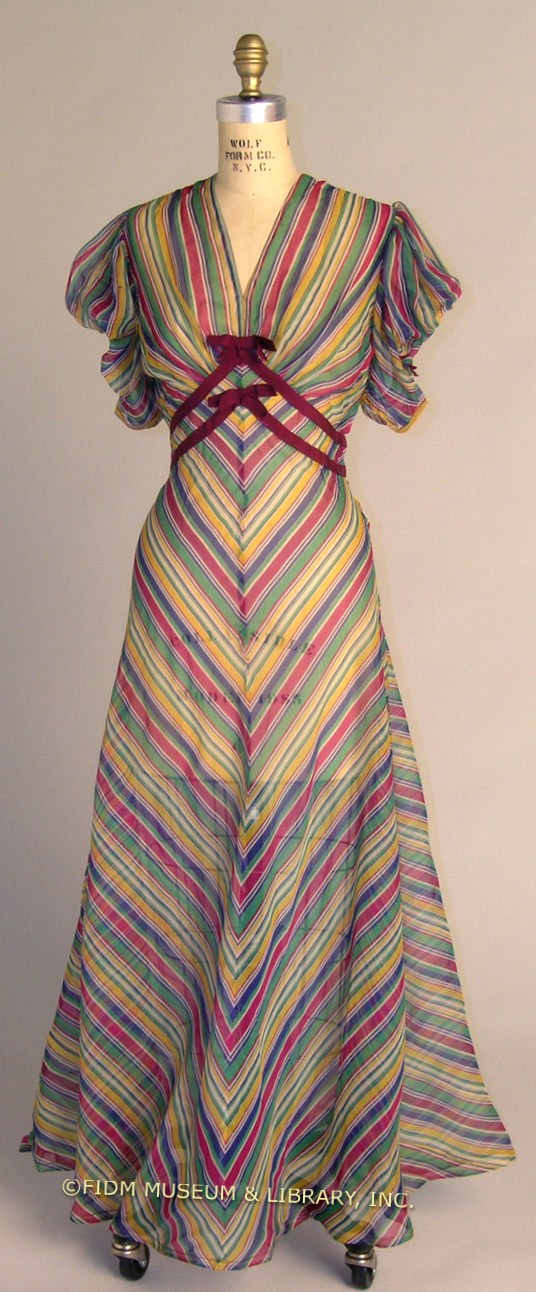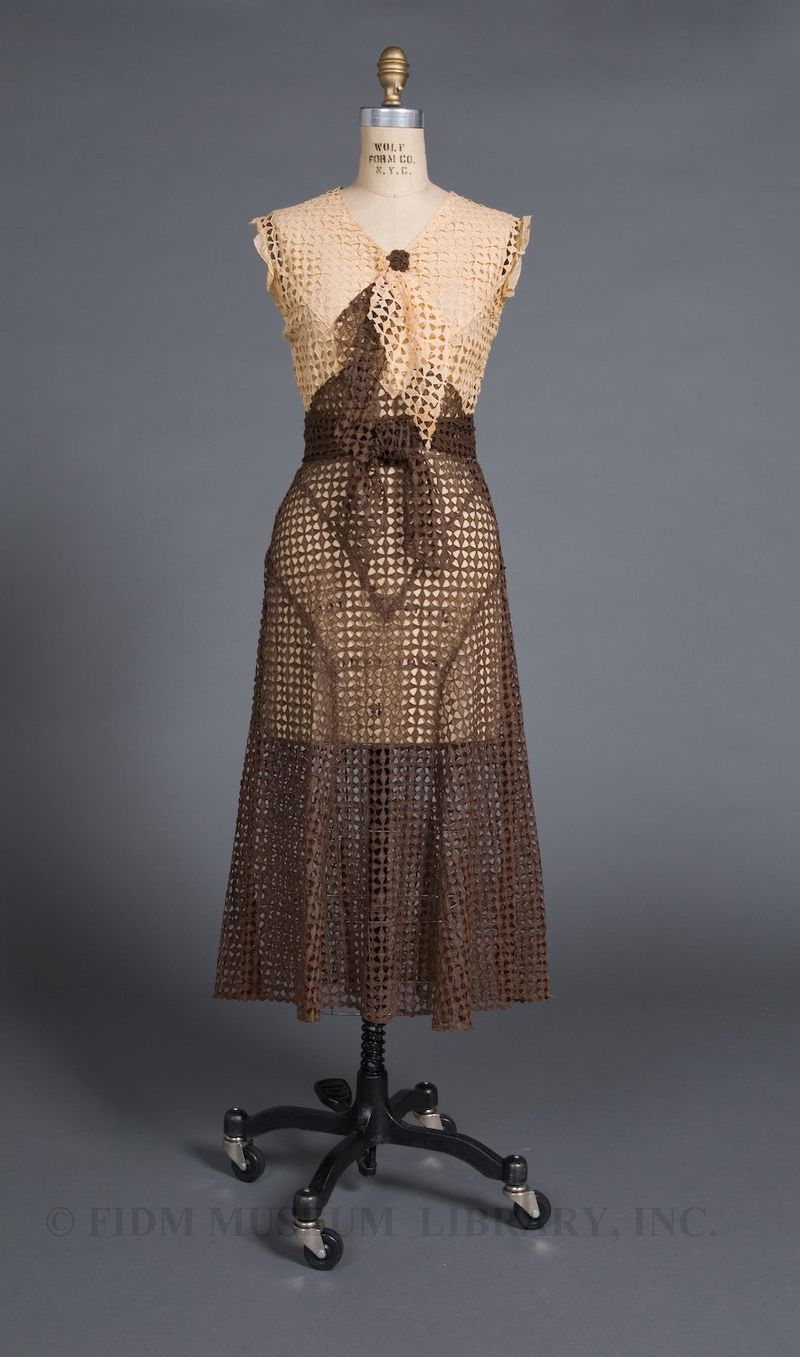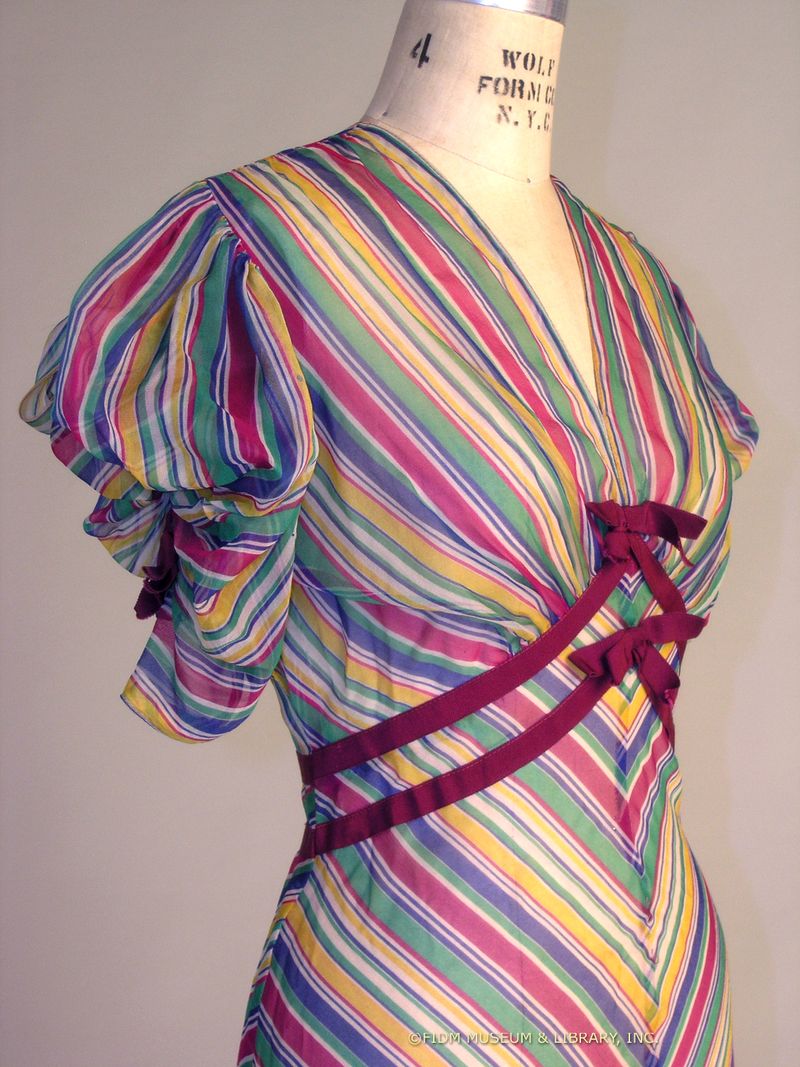See-through dresses of the 1930s
In deciding which objects to showcase on our blog, I often scrutinize the cataloged and photographed objects in our collections management system. During a recent scroll through these images, I was struck by the number of sheer, transparent, and see-through garments in our collection. Many of these revealing garments were created between 1965-2000, when a glimpse of the body itself, or the undergarments that shield the body from view, moved in and out of fashion. More intriguing than these relatively contemporary garments were the sheer dresses dating from the 1930s.
In contemporary fashion, the revelation of skin or undergarments has reached the point where it is remarkable only in certain circumstances, i.e. the workplace or other professional and/or formal situations. Outside of these specific situations, transparent, see-through or barely-there garments are simply another feature of the fashion landscape. But what about transparent or see-through dresses of other eras, specifically the 1930s?

Sheer day dress
1936-38
Gift of Anonymous Donor
2003.40.1
1936-38
Sheer dresses, worn over slips of flesh-toned or contrasting fabric, were a common feature of 1930s fashion. Note that the sheer striped dress seen here was dressed without a slip. Without this concealing undergarment, you can easily see the markings on the dress form underneath. Somewhat surprisingly, sheer dresses were worn for both day and evening wear, particularly in the summer. Given its year-round temperate climate, the Los Angeles fashion press was particularly vocal in promoting sheer dresses. In 1933, the Los Angeles Times suggested "tailored sheer dresses" as a good choice for "hot-weather daytime fashion."1 A 1939 article from the New York Times titled "Spring and Summer Sheers for Town Wear," detailed a variety of sheer dresses suitable for different occasions, including a "dainty peek-a-boo frock of black sheer, " with curved lines of faggoting on the bodice which provided glimpses of a pink slip.2 Haute couture designers, including Coco Chanel and Madeline Vionnet, also designed elegant sheer evening dresses. Two sheer dresses by Vionnet dating from the 1930s can be seen here. Consumers of more modest means could purchase sheer dresses from a variety of retailers, including Sears.
Fashion scholars generally agree that Hollywood was the most influential purveyor of new styles during the 1930s. Films created in Hollywood were seen through the United States and the world, bringing the work of costume designers like Adrian and Edith Head to sophisticated urbanites and small-town girls. This 1940 promotional film called, Hollywood: Style Center of the World, details the spread of Hollywood-inspired fashion to all corners of the United States.Though created by MGM Studios as a promotional vehicle for upcoming films, it accurately portrays the relationship between Hollywood and popular fashion during the 1930s.
Though Hollywood fashion was influential, outside forces placed strictures on the type of fashions that could be featured in Hollywood films. The Motion Picture Production Code of 1930, more commonly known as the Hays Code, regulated all aspects of films produced in Hollywood, from narrative to character, and costume. In relation to costume, nudity in film, or the suggestion of nudity, was of particular concern. According to section VI of the Hays Code, "complete nudity is never permitted. This includes nudity in fact or in silhouette, or any lecherous or licentious notice thereof by other characters in the picture."
 Sheer day dress
Sheer day dress
1932
Gift of the Manlove Family
S2006.870.108
Even if worn over a modest slip, wouldn't this sheer dress have piqued the interest of Hays Code censors? Fashion scholars Anne Hollander and Rebecca Arnold have suggested that within the restrictive climate created by the Hays Code, sheer dresses were a way of adhering to the letter of the code, while discarding its spirit.3 Certainly, a sheer dress could be considered "nudity in silhouette." The suggestion of nudity would have been pushed even further if the dress in question were cut on the bias. Even when cut to hover around the body, the sheerness of chiffon or cutwork worn over a slip suggests the undeniable reality of the body, serving as a surrogate for the skin itself.
 Cutwork day dress
Cutwork day dress
c. 1933
Gift of the Manlove Family
2006.870.3A-C
1 "Colored Print Vogue Rising, Tobe Reports." Los Angeles Times 26 Mar. 1933: N15.
2 "Spring and Summer Sheers for Town Wear." New York Times 5 Mar. 1939: D6.
3 Arnold, Rebecca. Fashion, Desire and Anxiety: Image and Morality in the 20th Century. New Jersey: Rutgers University Press, 2001: 66-70.
